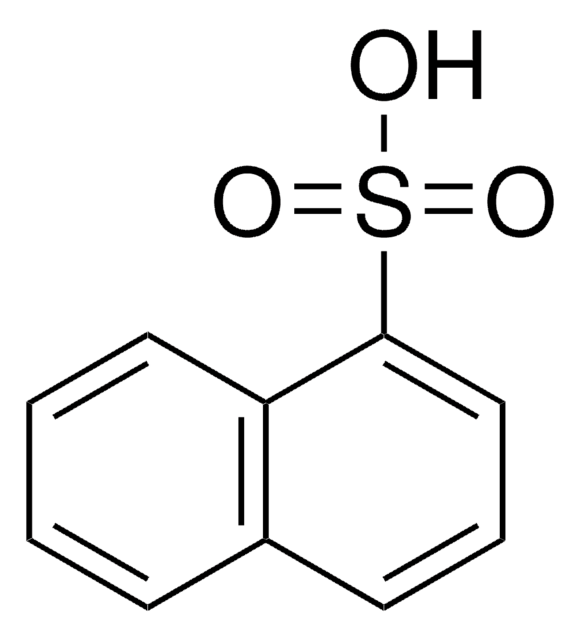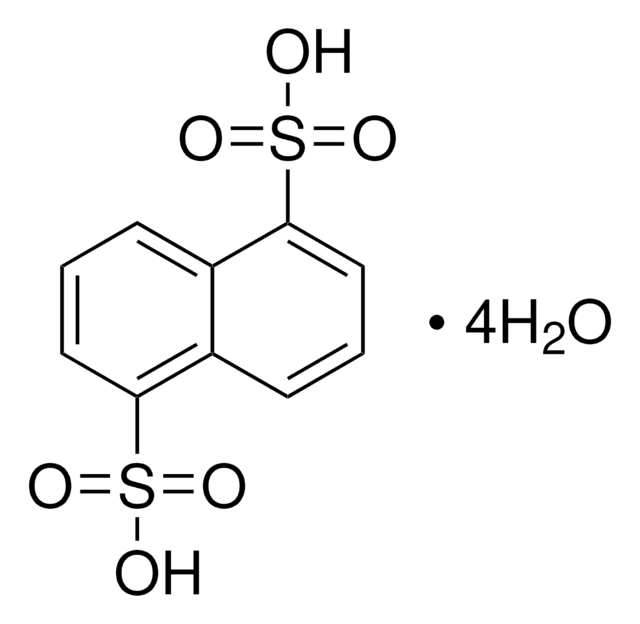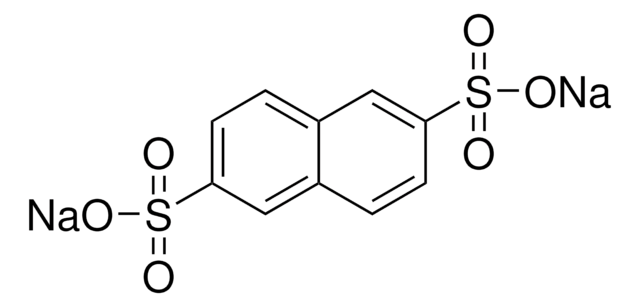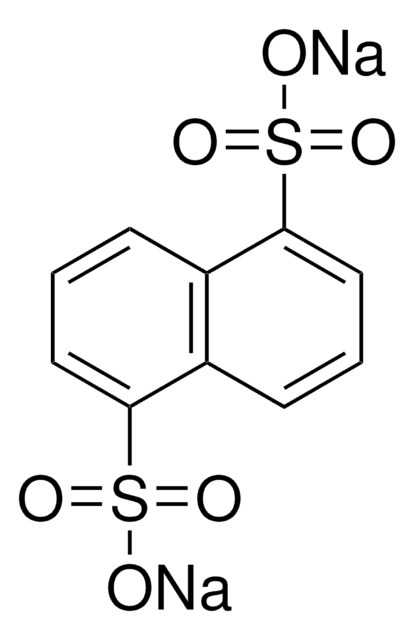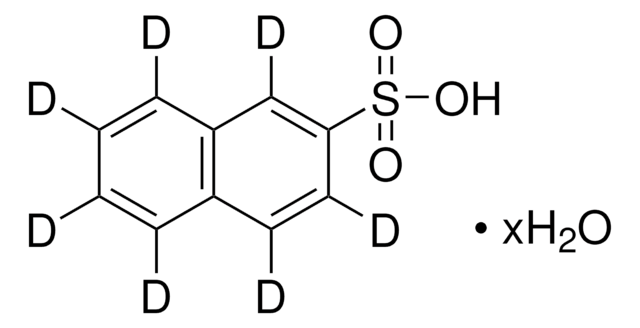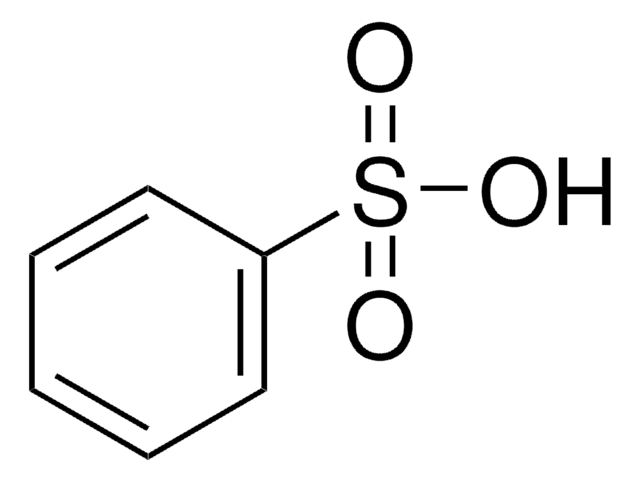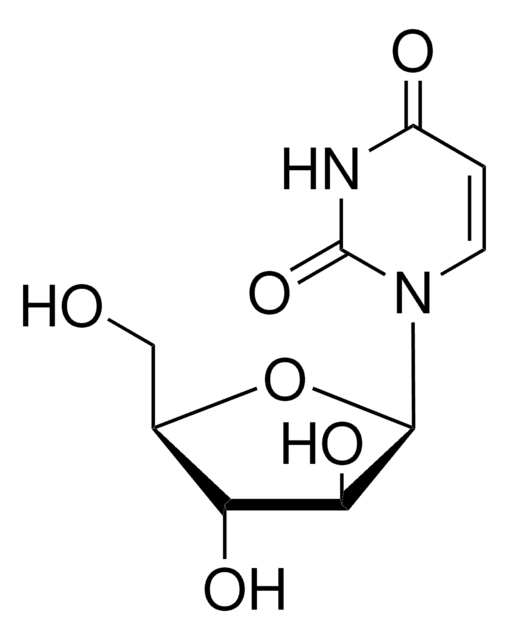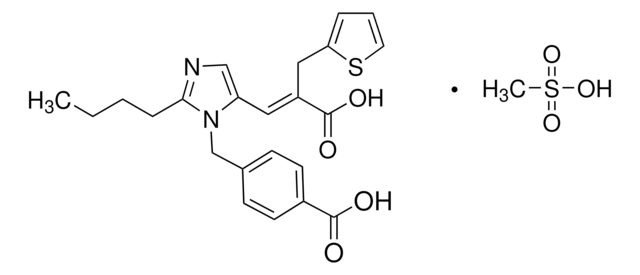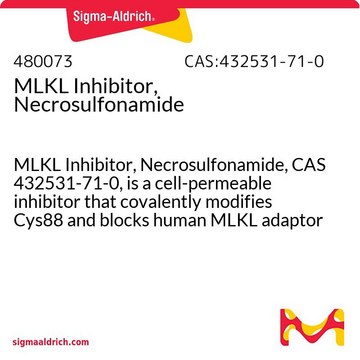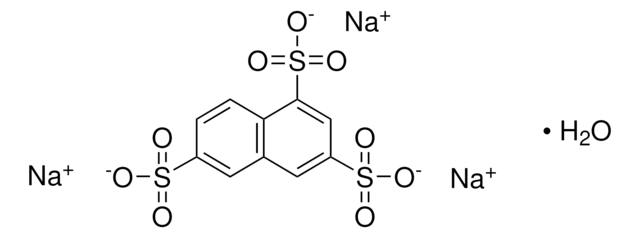Wichtige Dokumente
249548
2-Naphthalinsulfonsäure
technical grade, 70%
Synonym(e):
β-Naphthalenesulfonic acid, 2-Naphthylsulfonic acid, 2-Sulfonaphthalene
About This Item
Empfohlene Produkte
Qualität
technical grade
Qualitätsniveau
Assay
70%
Form
solid
Löslichkeit
water: freely soluble(lit.)
Funktionelle Gruppe
sulfonic acid
SMILES String
OS(=O)(=O)c1ccc2ccccc2c1
InChI
1S/C10H8O3S/c11-14(12,13)10-6-5-8-3-1-2-4-9(8)7-10/h1-7H,(H,11,12,13)
InChIKey
KVBGVZZKJNLNJU-UHFFFAOYSA-N
Angaben zum Gen
human ... EGFR(1956) , LCK(3932)
Allgemeine Beschreibung
Physikalische Eigenschaften
Signalwort
Danger
H-Sätze
Gefahreneinstufungen
Eye Dam. 1 - Met. Corr. 1 - Skin Corr. 1A
Lagerklassenschlüssel
8A - Combustible corrosive hazardous materials
WGK
WGK 3
Flammpunkt (°F)
Not applicable
Flammpunkt (°C)
Not applicable
Hier finden Sie alle aktuellen Versionen:
Besitzen Sie dieses Produkt bereits?
In der Dokumentenbibliothek finden Sie die Dokumentation zu den Produkten, die Sie kürzlich erworben haben.
Kunden haben sich ebenfalls angesehen
Unser Team von Wissenschaftlern verfügt über Erfahrung in allen Forschungsbereichen einschließlich Life Science, Materialwissenschaften, chemischer Synthese, Chromatographie, Analytik und vielen mehr..
Setzen Sie sich mit dem technischen Dienst in Verbindung.